We use affiliate links to run our site. When you buy through links on our site, we may earn an affiliate commission, without any added cost to you. Learn more
Are you a proud owner of a spider plant, or are you considering getting one for your home or office? Spider plants are one of the most popular houseplants because they are not only easy to care for but also add a touch of greenery to any space.
However, keeping them happy and healthy can sometimes be a challenge, and you may run into problems like brown tips or yellow leaves.
In this post, we will cover everything you need to know about caring for your spider plant, including light and water requirements, fertilizer, pruning, and common problems to look out for.
So, grab a cup of tea, sit back, and let’s dive into the world of spider plants!
Understanding Your Spider Plant:
Before we dive into the specifics of spider plant care, it’s important to understand what makes this plant so unique.
The spider plant, also known as Chlorophytum comosum, is a type of flowering perennial that is native to tropical and southern Africa.
It gets its name from the spider-like appearance of its long, thin leaves, which grow in clusters and can reach up to 18 inches in length.
One of the most interesting features of the spider plant is its ability to produce plantlets, or miniature versions of the parent plant, that grow on long, thin stems known as runners.
These plantlets can be easily propagated to create new spider plants, making them a great option for those who want to expand their collection without having to purchase new plants.
Types of Spider Plants:
Spider plants come in various forms and can add a unique touch of greenery to your space. Here are some popular varieties:
- Chlorophytum comosum ‘Variegatum’: This plant has cream or white leaf margins with a dark green stripe down the middle. Its long stems are green.
- Chlorophytum comosum ‘Vittatum’: The leaves of this plant have a center white stripe surrounded by medium green margins. Its long stems are white.
- Chlorophytum comosum ‘Bonnie’: This variety is more compact than the standard spider plant and has loosely curled leaves with green margins and a cream center stripe. It produces yellow flowers.
Each variety has its own unique characteristics, so choose the one that best fits your aesthetic and care preferences.
Light Requirements:
When it comes to illuminating your spider plant, you’ll want to provide just the right amount of light to keep it thriving. Here are some tips to keep your spider plant happy and healthy:
- Shady Delight: If you’re growing your spider plant outside, give it a spot in light shade for the best results. While it can tolerate heavy shade, your plant won’t grow as robustly.
- Beware the Burn: Spider plants may be tough, but they’re not invincible. Direct sunlight can scorch their leaves, so make sure to protect them from too much sun.
- Indoor Oasis: If you’re growing your spider plant inside, find a sunny spot near a bright window or patio door that receives indirect sunlight. Your plant will bask in the light and flourish with ease.
Remember, proper lighting is essential for the growth and health of your spider plant.
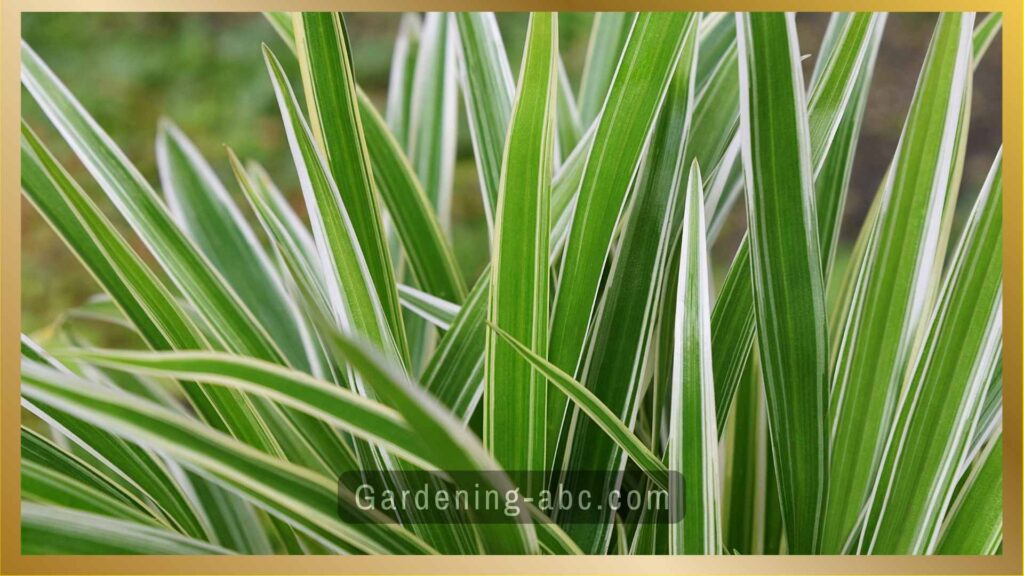
Watering
Just like us, spider plants also need water to survive, but the amount and quality matter! These beauties prefer slightly moist soil that’s not overly saturated, as overwatering can lead to root rot and eventually cause the plant’s demise.
Interestingly, spider plants are quite picky when it comes to water quality, as they are sensitive to fluoride and chlorine. These chemicals can cause brown tips on their beautiful leaves, which is not ideal for their aesthetic appeal.
To keep your spider plant healthy and thriving, it’s recommended to use rainwater or distilled water for container plants. This will prevent any fluoride or chlorine build-up, giving your plant the best chance of survival.
But don’t worry, spider plants are quite resilient! Even inconsistent watering won’t harm them too much, as their fleshy tubers can store water well.
Ideal Temperature and Humidity:
Spider plants enjoy warm and humid conditions, and they absolutely despise temperatures below 50 degrees Fahrenheit. So, if you have your spider plant indoors, make sure it’s protected from those nasty drafts and air-conditioning vents!
Moreover, our beloved spider plants are sensitive little things, and their leaf tips can brown if the humidity is too low. But don’t worry! There’s a solution to everything, and in this case, it’s a humidifier.
Regular misting of the plant can help maintain adequate humidity, but a humidifier like this is the best option to keep your spider plant happy and healthy. You can find a variety of humidifiers in the market that fit your budget and style.
Fertilizing The Spider Plant:
Just like how we can’t survive without proper nutrition, your plant can’t grow well without it either. Spider plants need moderate feeding, roughly once a month during the active growing seasons of spring and summer.
But be careful not to overfeed them, as this can lead to brown leaf tips. On the other hand, if you don’t give them enough food, their growth will suffer.
So, what kind of food should you give them? You can use an all-purpose granular or water-soluble fertilizer during the growing season, following the label instructions.
You can even find fertilizers specifically made for spider plants. Keep an eye on how your plant responds and adjust the amount if necessary depending on its growth.
Trust me, your plant will thank you for the extra nutrients!
Pruning:
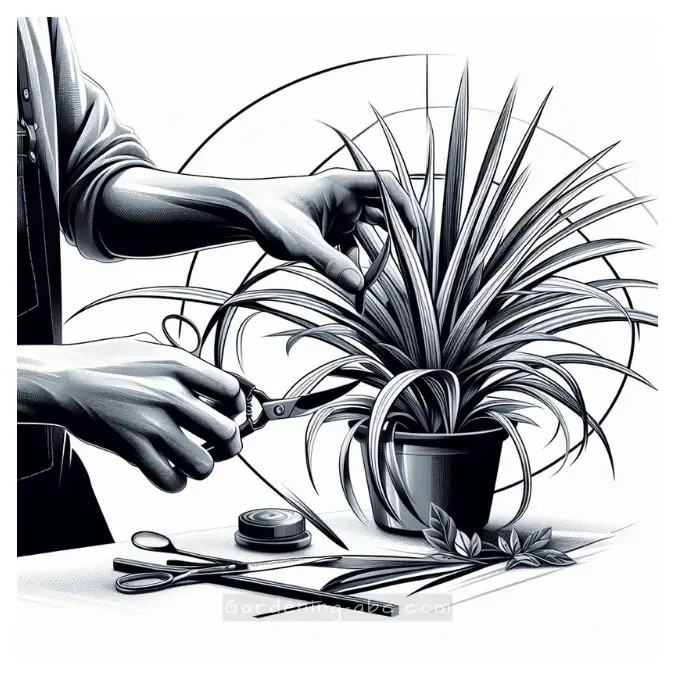
Pruning is an essential aspect of spider plant care and will help to keep it healthy and looking its best.
Dead or browning leaves can make your plant look unsightly and should be removed promptly. Not only do they detract from the plant’s appearance, but they can also attract pests and lead to disease. Removing these leaves will help to redirect the plant’s energy to the healthy parts of the plant.
Additionally, if your spider plant is becoming too leggy and sparse, pruning can help to redirect its growth. Removing the plantlet shoots can help the plant focus its energy on the main plant, resulting in a fuller and more robust appearance.
Remember to use clean, sharp tools when pruning your spider plant to avoid damaging the plant. By regularly pruning your spider plant, you can ensure that it stays healthy and beautiful for years to come.
Overwintering:
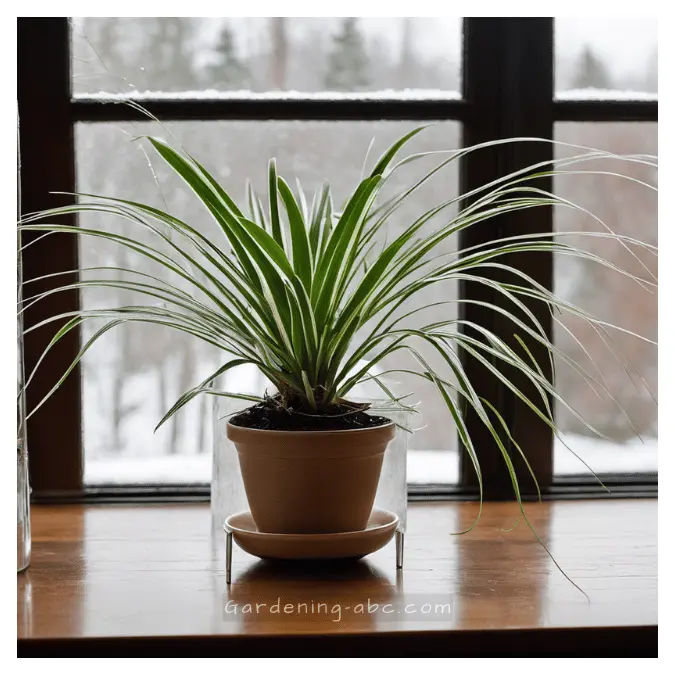
Winter is a time of rest and hibernation for many plants. Spider plants are no exception, and they naturally slow down during this season. To ensure that they stay healthy and happy, it’s important to adjust their care routine accordingly.
During winter, it’s best to cut back on the fertilizing schedule, as spider plants are not actively growing and don’t need as much nutrition. Instead, focus on keeping the soil lightly moist, as the dry winter air can cause the plant to dry out quickly.
Regular misting of the plant can also help to maintain adequate humidity levels, which is especially important in dry winter environments.
While spider plants may be slowing down during winter, don’t neglect them! They still need your care and attention to thrive. With a little extra love and attention, you can ensure that your spider plant stays healthy and happy all winter long.
How to Propagate Spider Plants:
Propagating spider plants is very easy, even for beginners! Here’s how you can do it:
First, look for the small plantlets that have grown roots of at least an inch or two long on the spider plant stem. Carefully use sharp pruners to cut the plantlets off the stem, making sure not to damage the roots.
Next, find a well-draining clay or plastic container and fill it with the appropriate potting medium. Place the plantlet in the container and ensure that the soil remains moist but not soggy until it’s established.
For plantlets without developed roots, you can place a small pot filled with potting soil near the parent plant. Then, put the plantlet on top of the soil in the new pot and keep it moist.
Within a few weeks, roots will develop. Once they do, snip the plantlet from the parent plant and continue growing it in the new pot.
Alternatively, you can dig up and divide mature spider plants. Gently pull apart the root ball into sections while keeping as many roots intact as possible. After that, you can replant the sections and watch them grow.
Propagating spider plants is so simple that you might end up with more plants than you know what to do with! So go ahead and share the love with your friends, family, and anyone who wants to brighten up their space with some greenery.
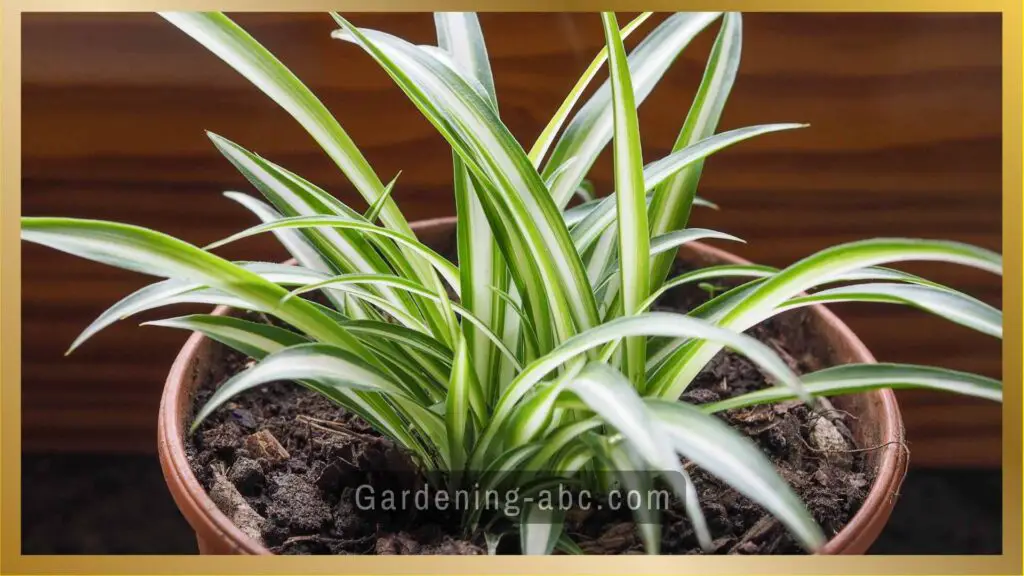
Repotting:
Over time, your spider plant will outgrow its current pot, and its roots will start to poke out through the drainage holes. This is a good indication that it’s time for repotting, which should be done every two to three years. Spring is the perfect time to do this.
To repot your spider plant, gently remove it from its old container and position it at the same depth in a slightly bigger container. Add fresh potting mix around the plant and give it a good watering. Your spider plant will appreciate the extra space and nutrients, and it will reward you with lush green growth!
Common Pests That Affect A Spider Plant:
Taking care of your spider plant can be an enjoyable and rewarding experience, but pests and diseases can quickly turn your green thumb brown. Thankfully, spider plants are generally healthy and resilient, but a few common plant pests can still take hold.
Aphids, whiteflies, and spider mites are among the most common pests that can harm your plant. One telltale sign of an infestation is depreciated foliage.
To combat these pests, a gentle rinse with water can often do the trick. For more severe infestations, you may need to use an insecticide or a natural remedy such as neem oil.
It’s important to take action quickly to prevent further damage. Remember to always monitor your plant closely and give it the love and attention it needs to stay healthy and vibrant.
Troubleshooting:
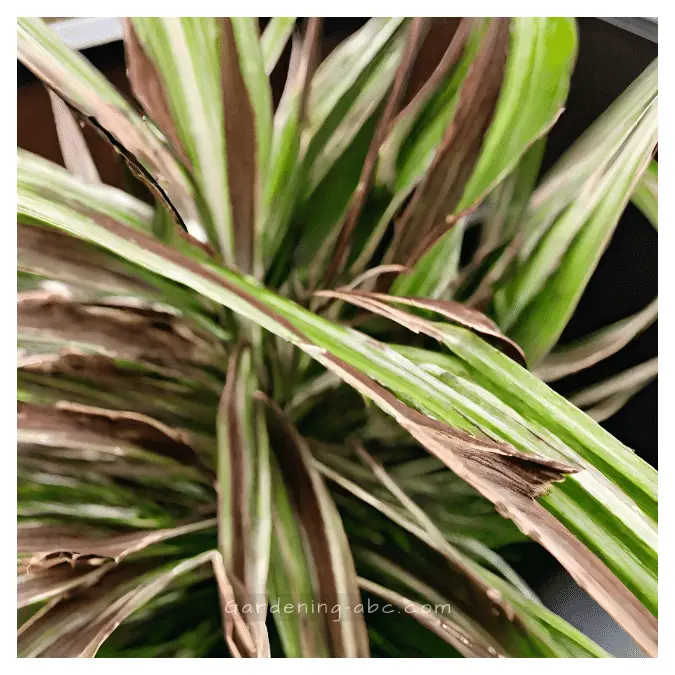
Even though spider plants are generally easy to care for, they can still run into issues. The most common problems include brown tips on the leaves, which can be caused by overwatering or underwatering, and brown or yellow leaves, which can be a sign of too much direct sunlight.
But don’t panic, you can still save your precious plant! To start, diagnose the problem and take corrective action as soon as possible.
Check the moisture level of the soil, adjust the amount of light it’s getting, and give it some TLC. With a little bit of care and attention, your spider plant will bounce back and be back to its beautiful self in no time!
| Problem | Description | Solution |
|---|---|---|
| Yellow or Green Leaves | Leaves may turn yellow or lime green due to overwatering. | Move the plant to a shadier spot, ensure the topsoil is dry before watering, and remove yellow leaves. |
| Brown Leaves | Leaves may turn brown, often due to overwatering with tap water. | Switch to distilled water. Trim brown leaf tips during the growing months (spring and summer). Avoid trimming in winter. |
| Wilted Leaves | If the leaves are fully wilting, the plant may be in poor health. | Give it 10 days to see if it recovers; if not, it may be unsalvageable. |
Conclusion:
Congratulations, you are now officially a spider plant expert! With this comprehensive guide, you should be able to keep your spider plants healthy and thriving for years to come. Remember, spider plants are not just beautiful but also great air purifiers, so taking care of them is a win-win situation!
If you found this post helpful, please share it with your friends and family who may also love spider plants. And don’t forget to explore more articles on this site for more helpful plant care tips and tricks.
Now it’s time to take action and put all this knowledge into practice. Get your hands dirty, have fun, and enjoy the beautiful foliage of your spider plants. Happy gardening!
FAQs On Spider Plants:
How tall do spider plants grow?
Spider plants can grow up to 12-15 inches tall
How often should I feed spider plants?
Spider plants don’t require frequent feeding, but you can feed them with a balanced fertilizer once a month during the growing season.
What should I do after repotting a spider plant?
After repotting a spider plant, it’s best to avoid watering it for a few days to allow the roots to settle in. If you had to tear off some of the roots during repotting, there is a risk of root infection or rot, so monitor the plant closely and make sure the soil is well-draining.
Are spider plants toxic to cats?
No, spider plants are not toxic to cats.
Amazon and the Amazon logo are trademarks of Amazon.com, Inc, or its affiliates.

Hi there! My name is Prasenjit and I’m an avid gardener and someone who has grown a passion for growing plants. From my hands-on experience, I have learned what works and what doesn’t. Here I share everything I have learned.
